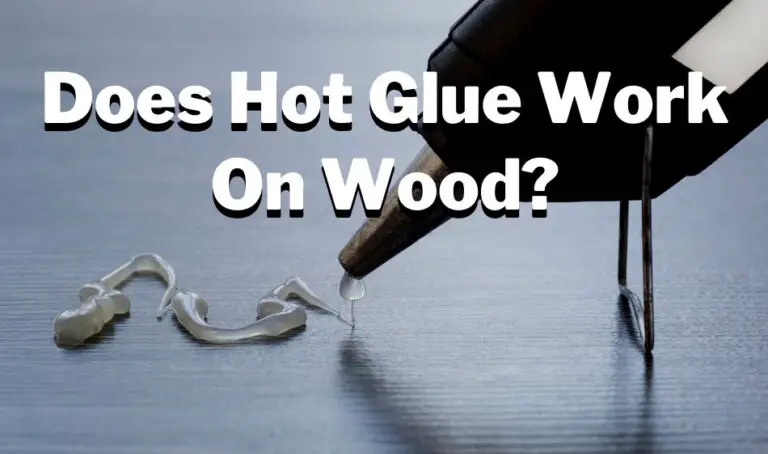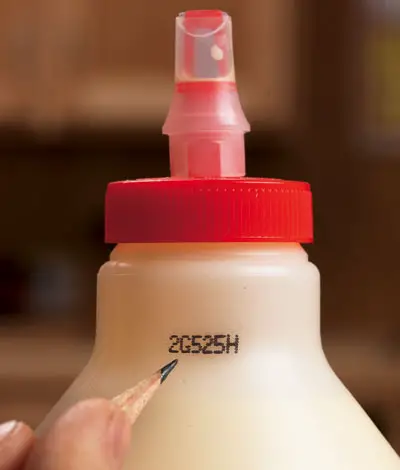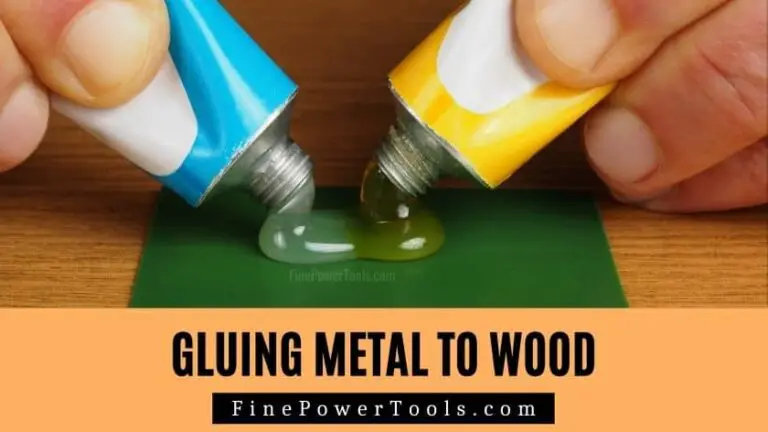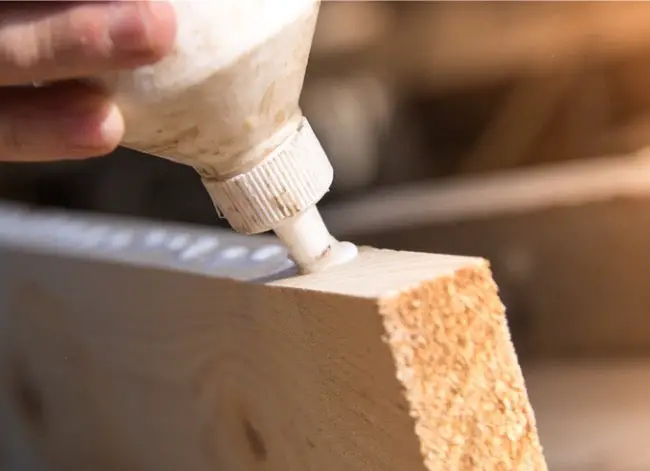Does Wood Glue Go Bad
The short answer is yes, wood glue can go bad. However, it takes quite a while for this to happen and there are usually telltale signs that the glue is no longer usable. Here’s a more detailed look at why wood glue goes bad and what you should do if you come across some that’s past its prime.
Wood glue is an essential household item, but does it have a shelf life? And if so, how can you tell if wood glue has gone bad?
Here’s the lowdown on wood glue: most types of wood glue are designed to last for years, even decades.
However, there are a few things that can cause wood glue to break down and go bad.
One thing that can affect the longevity of wood glue is exposure to extreme temperatures. If your house gets very hot or cold, it’s possible that the wood glue will start to degrade.
Another thing that can shorten the lifespan of wood glue is sunlight exposure. If you store your wood glue in a sunny spot, it’s more likely to deteriorate over time.
So how can you tell if your wood glue has gone bad?
The easiest way is to simply try using it on a piece of scrap wood. If the glued joint isn’t as strong as it should be, or if the glued area looks discolored, then the wood glue has probably gone bad and needs to be replaced.
How to Tell If Wood Glue is Bad
If you’re a woodworker, then you know that one of the most important tools in your arsenal is wood glue. This adhesive is what allows you to create strong joints and bond pieces of wood together. But what happens when your wood glue goes bad?
How can you tell if it’s time to toss it out and start fresh?
Here are a few signs that your wood glue has gone bad:
The color has changed: Wood glue should be a pale yellow color.
If it’s darker than that, it’s probably starting to go bad.
It’s become clumpy: Good wood glue should be smooth and free of clumps. If yours has developed clumps, then it’s no longer effective.
It doesn’t seem to be bonding as well: If your glued joints are not as strong as they used to be, or if the adhesive isn’t holding as well, then it’s time to get rid of it.
If you notice any of these signs, then it’s time to get rid of your old wood glue and start fresh with a new batch. Don’t take chances with sub-par adhesive – it could ruin your project!
Gorilla Wood Glue Shelf Life
Gorilla Wood Glue is one of the most popular wood glues on the market. It’s known for its strength and reliability. But like all products, it has a shelf life.
Here’s what you need to know about the Gorilla Wood Glue shelf life.
First, let’s talk about what Gorilla Wood Glue is made of. The main ingredient in Gorilla Wood Glue is polyvinyl acetate (PVA).
This type of glue is water-based, so it’s important to keep it away from moisture. PVA glue is also sensitive to temperature changes. That’s why Gorilla Wood Glue should be stored in a cool, dry place.
Now that we know what Gorilla Wood Glue is made of, let’s talk about how long it will last. The general rule of thumb is that PVA glue has a shelf life of two years. However, Gorilla Wood Glue has a slightly shorter shelf life of one year .
This is due to the fact that it contains additional ingredients that can break down over time .
So if you want your Gorilla Wood Glue to last as long as possible, be sure to store it in a cool , dry place . And if you have any questions about its shelf life , feel free to contact Gorilla directly .
They would be more than happy to help!
Read: Can You Use Expired Glue
How Long Does Wood Glue Take to Dry
Different types of wood glue have different drying times, so it’s important to check the label before beginning your project. Generally speaking, however, most wood glues take about 24 hours to fully dry. This means that you’ll need to be patient and give your project plenty of time to set before moving on.
If you’re in a hurry, there are a few things you can do to speed up the drying process. First, make sure that the surface you’re working on is clean and free of any debris or dust. This will help the glue adhere better and dry more quickly.
Additionally, try applying heat to the area with a hair dryer or heat gun. Be careful not to overdo it, though, as too much heat can damage the glue or your project.
With a little bit of patience, your wood glue will be dry in no time and your project will be ready to use!
Read to know: How Long Does Wood Glue Take to Dry
Is Wood Glue Good After Freezing
Most people don’t realize that wood glue can actually be frozen without affecting its quality. This is because the glue is made up of mostly water, which means it will expand and contract as the temperature changes. However, this doesn’t mean that you should go out and freeze your glue if you’re not using it right away.
If you do need to store your wood glue in the freezer, make sure to put it in an airtight container so it doesn’t dry out. You’ll also want to thaw the glue before using it, as it won’t work as well when cold. Overall, freezing your wood glue is a perfectly acceptable way to store it, just don’t forget to thaw it out before using!
Wood Glue Dried in Bottle
If you’ve ever had wood glue dry in the bottle, you know it can be a real pain. The good news is that there are a few things you can do to get rid of it.
First, try running the bottle under hot water for a few minutes.
This will often loosen up the dried glue enough that you can get it out of the bottle.
If that doesn’t work, you can try soaking the bottle in vinegar for a few hours. The acidity of the vinegar will help break down the glue.
Once you’ve removed as much of the dried glue as possible, rinse out the bottle and let it dry completely before using it again.
Essential: What Does Tacky Glue Work on

Credit: www.finewoodworking.com
Can You Use Out of Date Wood Glue?
Wood glue is a vital part of many woodworking projects. It is used to bond pieces of wood together and can provide a strong, long-lasting joint. However, it is important to use the correct type of glue for the job and to follow the manufacturer’s instructions.
There are several different types of wood glue available on the market, each with its own advantages and disadvantages. The most common type of wood glue is PVA (polyvinyl acetate) glue. This type of glue is water-based and easy to use.
It dries clear and has a moderate set time, making it ideal for many applications. PVA glue will not yellow over time and has good resistance to heat and moisture. However, it is not as strong as some other types of wood glue and may not be suitable for heavy duty applications.
Another common type of wood glue is epoxy resin adhesive. This type of adhesive is much stronger than PVA glue and can be used for bonding metal, glass or plastic as well as wood. Epoxy resin adhesives have a longer set time than PVA glues, so you need to be patient when using them.
They also have a very strong odor and can be toxic if inhaled, so take care when using them in enclosed spaces.
If you are working with old or antique furniture, you may need to use an animal-based adhesive such as hide glue or casein glue. These types of glues were commonly used in the past but are no longer widely available commercially.
They can be difficult to work with but will give your project a more authentic look if that is what you are going for.
So, can you use out-of-date wood glue? In general, it is best to use freshglue that has been stored properlyand within its shelf life .
However, there are some exceptions where olderglue could still be usable – particularly if it isspecialtyglue that isno longer being manufactured . Ifyou do decide touse out-of-dateglue , make sureto test it firston scrapwoodto see howwellit holds up beforeusingit on yourproject .
Woodworkers should know: How Do You Make Wood Glue Dry Faster?
Does Titebond Wood Glue Go Bad?
Yes, Titebond wood glue can go bad. Over time, the glue can become hard and brittle, making it difficult to use. If you notice that your Titebond wood glue is starting to harden or become difficult to use, it’s best to replace it with a new bottle.
Does Gorilla Wood Glue Have a Shelf Life?
Gorilla Wood Glue is one of the most popular wood glues on the market. But does it have a shelf life?
The answer is yes, Gorilla Wood Glue does have a shelf life.
However, the length of that shelf life will depend on how you store the glue. If you store it in a cool, dry place, it can last for years. But if you store it in a hot or humid place, it will only last for a few months.
So if you want your Gorilla Wood Glue to last as long as possible, be sure to store it in a cool, dry place.
Top 5 reasons glue doesn’t bond
Conclusion
As with most adhesives, wood glue will eventually go bad. The specific timeframe depends on the type of glue and how it’s stored. Unopened bottles of Titebond or Elmer’s white glue can last up to four years if stored in a cool, dry place.
Once opened, however, the clock starts ticking and the glue will only last for about a year. Cyanoacrylate (CA) glues have an even shorter shelf life of six to twelve months.






